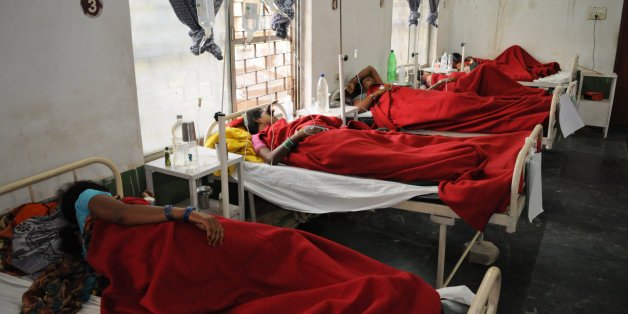Trigger warning: Abuse, Violence
“I need to quit my studies… I need to shift the city. Cannot take the harassment by my husband beyond this. Was forced to abort my child and now I face daily abuse. I have to go away“.
Right above is the experience of one of my students, Neha, aged 27, while she was pursuing a professional course to kickstart her career. In the land of beti bachao, beti padhao (save the daughter, educate the daughter), Neha is just one of the several women whose reproductive choices, decisions, and rights are violated and this impacts their decisions to be educated and/or to work. Before you jump to discuss the mentality of the particular men in those homes as conservative, non-progressive, and barbaric, hold your thoughts because reproductive coercion is more common than we think. Reproductive coercion and abuse refers to any deliberate attempt to dictate a person’s reproductive choices or interfere with their reproductive autonomy.
The Many Faces of Reproductive Coercion

“We must have a baby if you love me”, “Got married? What about a baby?”, “Get it aborted! It is a girl”, “We don’t want you to marry our son, abort the baby” – from forced pregnancy to forced abortion and much in between, reproductive coercion comes in many forms.
From forced pregnancy to forced abortion and much in between, Reproductive coercion comes in many forms.
1. Stealthing And Forced Pregnancy
Neema, a young corporate trainer, was in a live-in relationship for a year. She rests in the hospital, as of this moment after delivering a child. Sounds like a ‘good news’? Maybe not. According to her,”Our usual evening routine after a tiring day of work involved Netflix and wine. Many a time, it ended in bed. This one time, he casually refused to use a condom, and before I could react or question, the damage was done. I felt stupid and blamed myself every passing day. Did not want to abort. Here I am, with a child, alone.” Neema’s partner was not ‘ready’ to be a father and moved to a different country. Herein, the act of stealthing (removing a condom without consent) was an extreme form of coercion and the consequences are leftovers for the woman to handle, of course.
In addition to stealthing, incidents of forcing pregnancy upon the woman when the male mentioned he was already on birth control methods like vasectomy are also not uncommon. Further, situations where after giving birth to a girl or two, the mother is usually forced to reproduce a third child as a boy doesn’t even sound alarming to us anymore. In cases like these, the consent is often manufactured by considering that the boy will eventually prove to be her “budhaape ki laathi” (support in old age).
2. Forced Abortions
Does the violence against the ‘to-be womb’ take place only behind closed doors? The state has often exercised direct control over women’s reproduction through mass sterilisations in the country. A total of 1,434 people died from procedures such as forced sterilisation in India between 2003 and 2012. As per HMIS, within 2017-18 (till October) of the total 14,73,418 sterilisation procedures, 93.1 % were female sterilisations. And in a democracy, where state actors are chosen by, from, of us, it is not an exaggeration to say that we allow such exploitation of a woman’s body.
Also read: Divided Feminism And Underlying Patriarchy Of Reproductive Health Concerns
Neha’s case from earlier was yet another example of a forced abortion that might be held simply because the husband or in-laws do not want the woman to bear that child. This form of reproductive coercion is most commonly practised against teens or for pregnancies before marriage. This is when India scores the highest teen pregnancies (16 million!) in the world. So with a lame understanding of maths, we can imagine the number of abortions in this group.

3. Denying the Right to Abortion
A woman’s body is the site of pregnancy and childbirth. It doesn’t end there. It is followed by a long enduring rearing process that has its own social, psychological, and economic implications. And so, if she doesn’t want to go through the process, it is her right to terminate a pregnancy. But that’s not part of the ‘common sense’! Instead, she is forced to hear stigmatizing statements such as, “Don’t abort this child, this is a product of our love”, or “Abortion is a sin in our religion, its murder”.
There is also the harassment that especially young unmarried women face at abortion clinics for being responsible for ‘illicit’ foetuses. In case they are married, women are asked to have the official consent of their husbands or families before they get to the operative table even though the MTP Act gives women the autonomy to decide for themselves.
To top it all, there are State regulations on the number of weeks into pregnancy, on what grounds can one get an abortion, and the inability of the state to monitor unsafe abortions. Such reproductive coercion by the family, society, medical clinics, and the State places women in a position of guilt and loss of control over their very own bodies, often leading women to seek out unsafe and illegal methods of abortion that have very high mortality rates.
Summing up, sabotaging birth control methods, lying about being on birth control, stealthing, and forcing the partner into pregnancy or abortion, are all ways of forcing reproduction. The primary concept underneath it all remains the same – a woman’s body and her reproductivity are controlled by everyone but the woman herself.
How Is Reproductive Coercion Normalised?
Misha married in her early 30s, shared a snippet from her life. She said, “My wedding function was barely over and everybody around had a question mark on their face, and not too many shied away from asking me- So when are you planning a baby? The biggest shock was when my husband mentioned that the proof of my love and commitment to him would be to give the ‘gift of a baby boy’ to the family as soon as possible. I didn’t have much of a choice.”
Misha’s story is anything but rare. Reproduction as the obvious next step after marriage and as one of the main (sometimes only) functions of marriage has pervaded into our common sense. To ensure that a woman never forgets her role after marriage, one of the most usual blessings in the Hindu religion for a newly-wed female is “dudho nahao, puto phalo” (flourish and produce sons). Across the spectrum from menstruation to menopause, there is a clear duality of sinful punishment and sacred rewards/celebrations associated with reproduction. All this almost makes it natural for a woman to be forced into reproduction or out of it when she fails to reproduce at a certain age, at a certain time, a particular sex, and with a particular person.
There is a clear duality of sinful punishment and sacred celebrations associated with reproduction
What does the State state?
In addition to the cultural norms and religious rituals that are important ingredients for this recipe of disaster, it is also important that the state ‘reproduces’ the idea that women’s reproduction is the business of those in power. From forced sterilisations to insufficient law processes, the state has time and again played its role in coercive reproduction.
Further, what does the state think about stealthing, that was a clear form of sexual violence in Neema’s case. Surprisingly, it is considered a form of rape in the Indian Penal Code. But there’s a problem that Laxmi Iyengar, a lawyer herself expresses as her concerns about this law. According to her, “Most women do not come forward and report stealthing because of the way our legal system works. Most of the women first have to gather the courage to go to the police station and file an FIR. After four to five visits to the police station, there is the trial. There, the women are ostracized, called names and she is the one put on trial and repeatedly mocked. The accused will get bail and they also fail to show up in court. The proceedings drag on for years. Who is willing to go through all this trouble?”
Reproduction – A Process Of Biology Or A Weapon Of Patriarchy?

Finally, it is critical to know that reproductive rights are contentious issues that are ever-present in political spheres spanning the world from the United Nations to small clinics in rural areas. It has been illustrated through several pieces of research that in societies where hyper-masculinity dominates, violence against women is a strategic tool to ensure that male power is maintained.
Also read: The Govt’s Secret War On Women’s Bodies In The Name Of Reproductive Healthcare
Reproductive coercion becomes one such form of violence that dispossesses a woman of control over her own body and reduces her to an object of patriarchal power. Whether women are placed in a position of reverence for being reproductive or as social outcasts for carrying an ‘illicit child’– they are but two sides of the same coin.
Note: The article includes real-life experiences of women. All the names mentioned have been changed to ensure anonymity.
Update: This article has been updated to add the paragraph on ‘denying the right to abortion.’
Featured Image Source: ESME





It is unfortunate the women are treated in some societies. What is even very unfortunate is that these beliefs are very deep rooted and they are sometimes some supported by women.